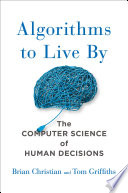

This concept revolves around the dilemma of when to stop searching for the best option and make a choice. The classic example is the 'secretary problem,' where you have to decide when to stop interviewing candidates for a position. The optimal strategy is to interview a certain percentage of candidates (around 37%) and then choose the next candidate who is better than all the previous ones. This idea can be applied to various life decisions, such as finding a spouse, choosing a job, or even selecting a house. The takeaway is that knowing when to stop looking and make a decision can significantly influence the outcomes in our lives.
Continue readingThis concept addresses the balance between exploring new options and exploiting known ones. In decision-making, exploration allows us to discover new possibilities, while exploitation maximizes the benefits from what we already know. The book uses the analogy of a restaurant: should you try a new dish (exploration) or stick with your favorite (exploitation)? The key is to find a balance that allows for personal growth and satisfaction without sacrificing the benefits of proven choices.
Continue readingThe cost and value of information are central to many decisions we make. The book discusses how gathering information can lead to better decisions but also comes with its own costs, such as time and resources. The challenge lies in determining how much information is enough to make a decision without falling into the trap of analysis paralysis. The author emphasizes that while more information can lead to better outcomes, it is essential to recognize when the diminishing returns set in.
Continue readingGame theory is the study of strategic interactions among rational decision-makers. The book explains how understanding the motivations and actions of others can lead to better decision-making. For instance, in competitive situations, recognizing that others are also trying to optimize their outcomes can influence your strategy. Concepts like Nash equilibrium illustrate how players can reach a state where no one benefits from changing their strategy unilaterally, which can be applied in negotiations, business strategies, and everyday interactions.
Continue readingBayesian thinking involves updating our beliefs based on new evidence. This approach contrasts with traditional statistical methods that often assume fixed probabilities. The book explains how adopting a Bayesian mindset can improve our decision-making by allowing us to adjust our expectations as new information becomes available. This is particularly useful in uncertain situations, where flexibility and adaptability are crucial for success.
Continue readingOverfitting occurs when a model is too complex and captures noise rather than the underlying trend. The book explains how this concept applies to decision-making in life. Just as in machine learning, where a model needs to generalize well to new data, our decisions should also be based on general principles rather than specific instances. Recognizing the difference between noise and valuable signals can lead to more robust and effective decision-making.
Continue readingThe book discusses the importance of randomness in decision-making and how embracing uncertainty can lead to better outcomes. Randomness can help break patterns of behavior that may be limiting and can lead to unexpected opportunities. By allowing for a degree of randomness in choices, individuals can open themselves up to new experiences and possibilities that they might otherwise overlook.
Continue reading